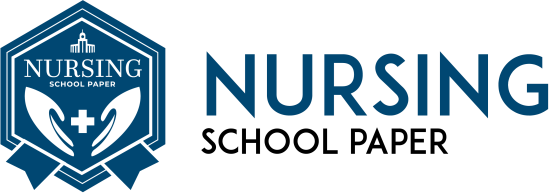
Technology’s Impact on Healthcare Services
The report will include an examination of the impact of technology on the delivery of healthcare services. Similarly, it will explain in detail how technology affects employee performance, organizational structure, and management planning in the healthcare sector. Because of the increasing use and changing nature of technology, I chose to address this topic. I’d like to offer a training program to my target audience, which includes my classmates. The healthcare sector is critical for every human being, and as advanced technology emerges, we must examine how the services are affected. We live in a technologically advanced world, and it is critical to understand how it affects employee performance, the structure of the healthcare organization, and management planning.
The American Lung Association is a non-profit organization that works to save people’s lives by improving their lung health and preventing lung diseases (American Lung Association, n.d). Similarly, the organization offers lung health education, lung disease research, support programs, services, and advocacy. Its vision is to ensure that people live in a world free of lung diseases. Technological advancements in the healthcare sector are critical to people’s health and quality of life. The American Lung Association implemented an electronic health record system, which resulted in significant cost savings in health care (American Lung Association, n.d). Similarly, it improved the patient’s health and safety. On the same note, healthcare facilities use the system to store patient files in databases, allowing them to be accessed from anywhere in the organization.
Technological innovation not only saves time but also plays an important role in data coordination and management (Carol Huston, 2013). Furthermore, it has paved the way for the use of non-invasive procedures. With the development of various imaging methods, technicians and physicians can examine the anatomy of the patient without using invasive procedures to form a diagnosis (Carol Huston, 2013). Furthermore, improved instruments and advanced technology enable minimally invasive surgeries.
The organization is currently confronted with the challenge of rising healthcare costs as a result of the need to use advanced technologies. Treatment advances for lung cancer, asthma, influenza, and pneumonia are driving up healthcare costs. Similarly, funding for medical research is driving up healthcare costs. With the need to provide better services to patients, the American Lung Association is faced with the challenge of balancing healthcare costs with service quality and access. New technologies create new opportunities for quality services, but the organization is struggling to relieve the strain of increased spending on technological utilization.
New technologies improve employee performance in the healthcare sector. Email, instant messaging, and social media allow employees to communicate and receive feedback on a variety of issues, improving their ability to perform tasks (Kabene, 2010). Furthermore, it aids in the automation of processes, reducing employee workload. Technology enhances organizational management planning. It enables easy data access and sharing via communication networks. Managers at the American Lung Association can share information and plan together using tools like video conferencing and online forums.
The emergence of new technologies has had an impact on the American Lung Association’s organizational structure. The organization is on the verge of providing an exceptional customer experience to its supporters. Because of the existence of online platforms and campaigns, communication has become more complicated. As a result, the organization must optimize its existing technological tools while maintaining its initiatives, capabilities, and goals. Within an organization, technology has the ability to create and eliminate positions (Kabene, 2010). For example, with the implementation of an electronic filing system, the American Lung Association no longer requires a large number of file clerks. The only thing the organization needs is a department to house the technicians who will maintain and grow the computer network.
The audience should understand the impact of technology on healthcare services, such as improving employee performance, changing organizational structure, and improving management planning. The audience must be able to use technology in their various operations as healthcare practitioners after completing the training program. The organization is dealing with the challenge of rising healthcare costs while also embracing new technology. The training program explains and comprehends the challenges in great detail. The training program will help the organization because it will show the audience what problems the organization is having and give them a chance to think of ways to solve them.

